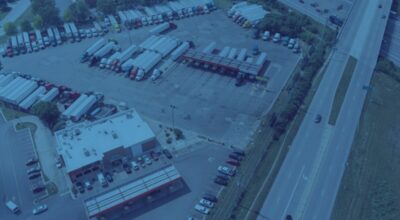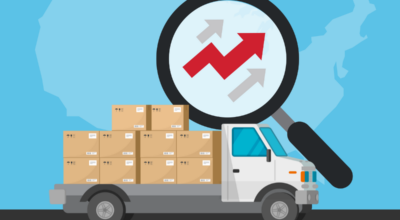
Last mile logistics is a supply chain management term that refers to the last leg of a product’s physical journey from a warehouse, distribution center, or transportation hub to the end customer (which can be a business or person). It’s common for companies to hire smaller carriers for this final portion of the trip.
For example, while Amazon may use a variety of transportation methods to move its goods from one fulfillment center to another, it often contracts with independent delivery organizations such as USPS, FedEx, and UPS to get these goods from the fulfillment centers into customers’ hands. These smaller carriers are responsible for making the final delivery of the parcel or package.
Although its name literally talks about the last mile, the distance covered in last mile logistics can be 20, 50, or even 100 miles or more. So, this supply chain term isn’t so much about the distance traveled as it is about the very last step in product delivery.
Why last mile delivery is important
One reason that it’s important for companies to think about last mile logistics is customer satisfaction and loyalty. It doesn’t matter how good other portions of your company are—maybe you make the highest-quality or lowest-cost goods—if you can’t get your products to the customers with speed and efficiency, they may take their business to a company that can.
At the same time, paying attention to last mile logistics is critical to your bottom line. An estimated 53% of total shipping costs are a result of last mile delivery. If these costs aren’t scrutinized and minimized when possible, they can rise even higher, eating up more of the company’s profits.
How to master last mile logistics
The use of delivery management software can help companies master last mile logistics. This type of technology can be used to increase transportation efficiency while improving the customer experience. It also provides the opportunity to see where a particular package is every step of the way, making it easier to see if a problem exists or to answer customers’ questions about where their parcel is and when it is expected to arrive. This is helpful when managing both on-demand and scheduled delivery services.
When considering last mile delivery options, companies can look to traditional services such as FedEx and UPS. Another alternative is to partner with independent couriers (self-employed couriers not affiliated with a specific delivery service), paying them to get your packages to the customers by transporting them in their own vehicles.
By hiring independent couriers, your company is provided the benefits of an on-demand delivery service. If your delivery needs are increased during the busy season, you simply hire more couriers. During downtimes, you hire fewer couriers. Yet, the one problem with this approach is that since the drivers don’t work with you directly, they may not adhere to your company’s standards.
One way around this, and a third option for last mile logistics, is to invest in a fleet of trucks and hire your own drivers. The benefit of this approach is that you have increased control over the delivery process. It also helps ensure that your packages are treated with the level of respect and care that you expect.
Finding the right drivers for this final delivery leg is important to upholding your company’s level of customer service. Centerline can help with this by connecting you with delivery drivers who understand the value of an effective delivery process—a process that meets the company’s needs while exceeding customer expectations at the same time.
Contact us today to learn more about our delivery driver solution or to discuss how we can help you make last mile delivery more efficient and more profitable.


